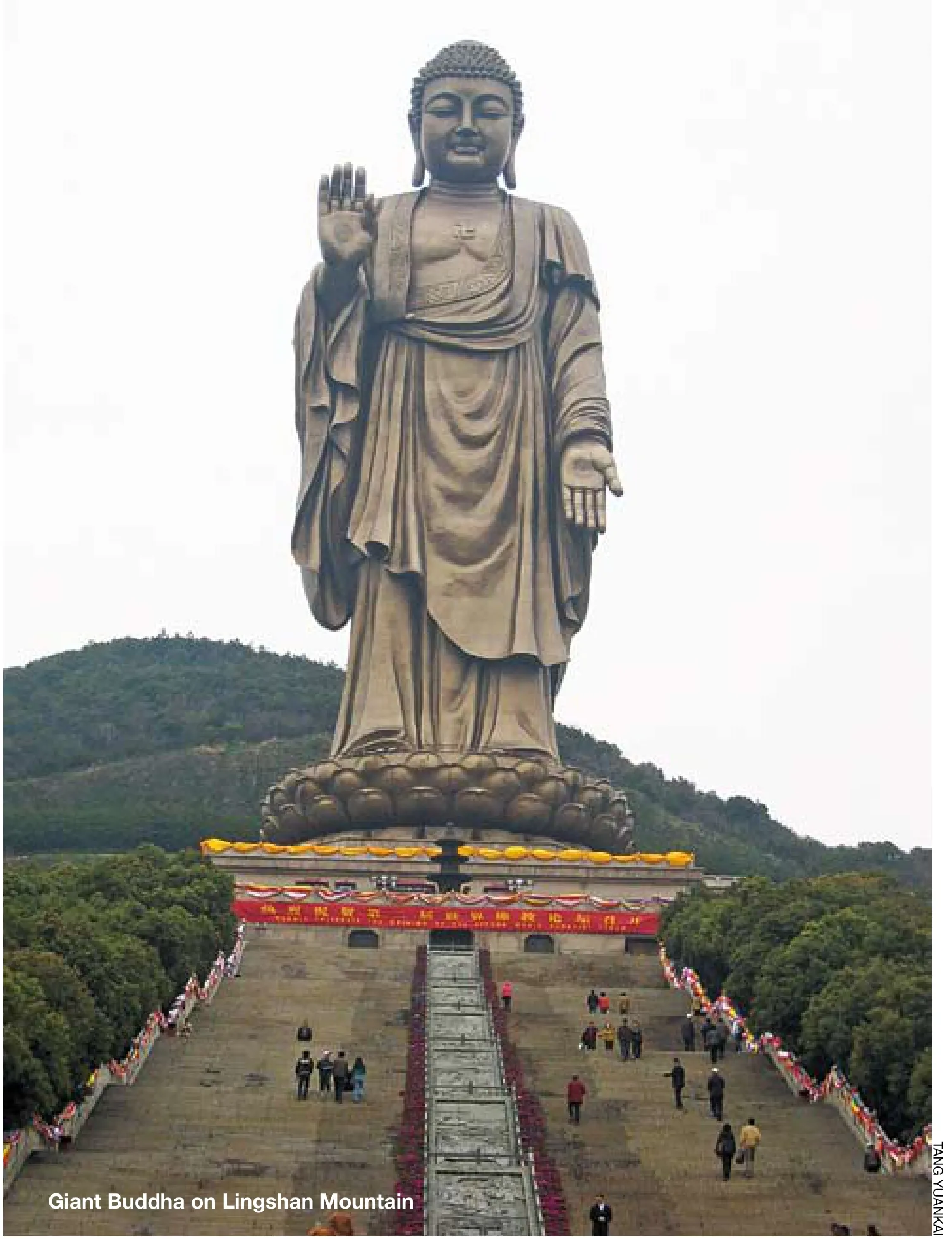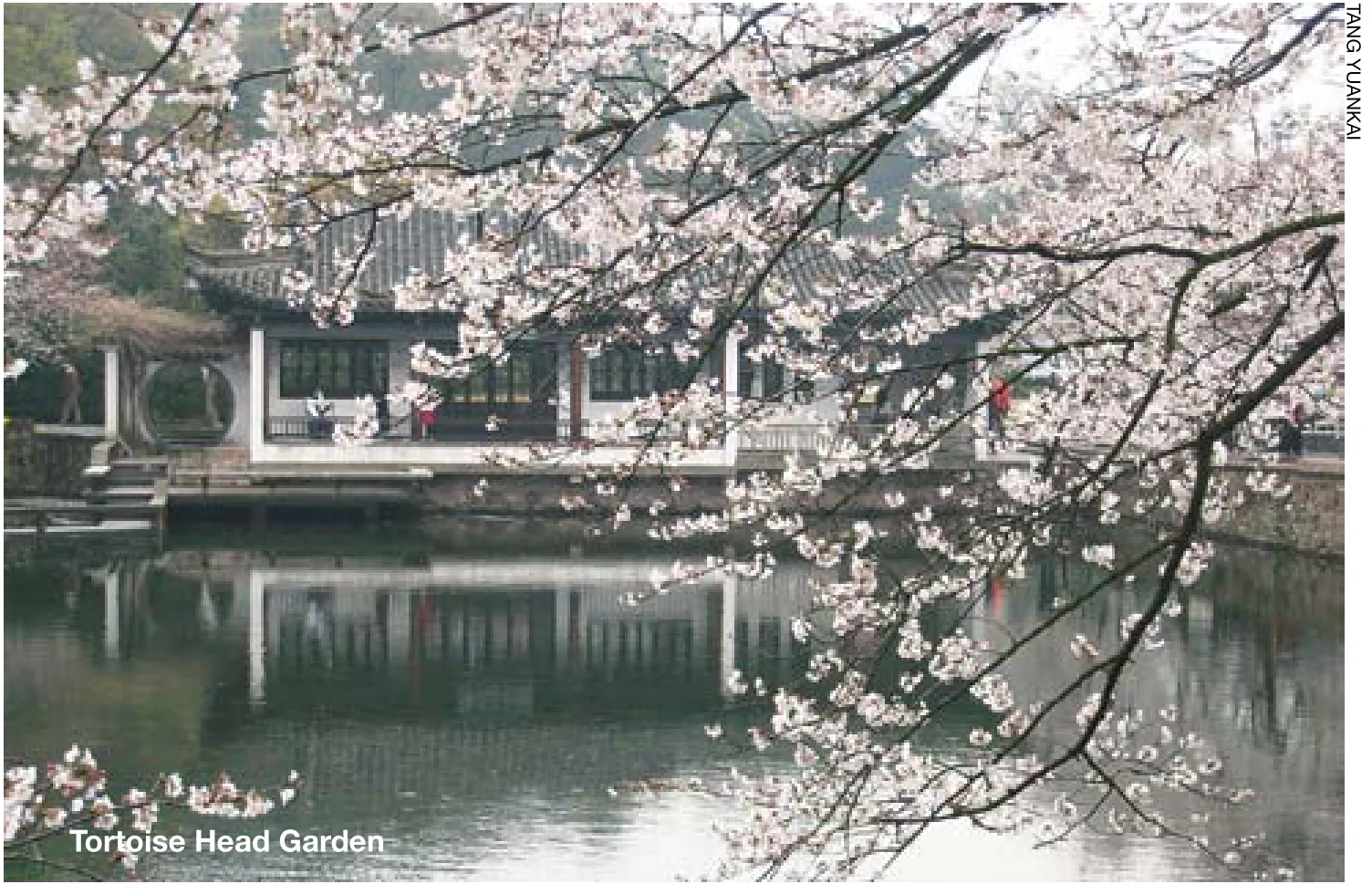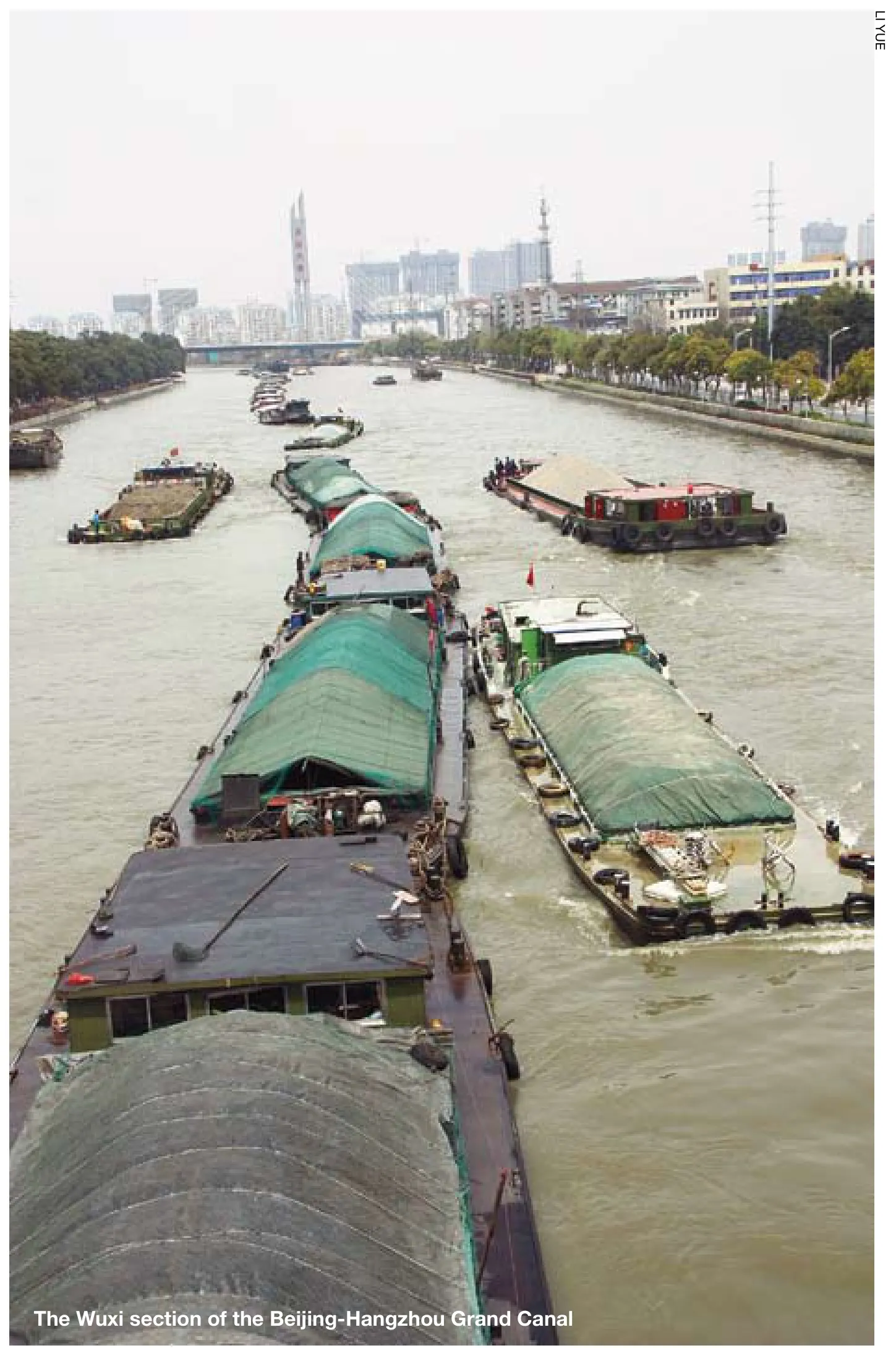From Shanghai to Wuxi
Wuxi provides lots to see for visitors to the Shanghai Expo
By TANG YUANKAI
Located in the Yangtze River Delta,Wuxi in east China’s Jiangsu Province is the host city of a forum themed “Sci-tech Innovation and Urban Future”—one of the six theme forums of the 2010 Shanghai World Expo.An hour’s drive from Shanghai, Wuxi has been propagating the catchphrase “Visiting the Expo in Shanghai, and taking time out in Wuxi” since last year. And the Expo opening is concomitant with the best season to tour Taihu Lake, a well-known tourist attraction to the south of Wuxi.
Taihu is China’s second largest freshwater lake with an area of 2,425 square km.Although it was hit by a large-scale bluegreen algae outbreak in June 2007, thanks to the municipal government’s efforts to reduce and control pollution by investing heavily in and applying high-end new technologies, it is gradually regaining its former beauty.
“Wuxi is a famous historical city noted for its picturesque scenery, with water area covering 32 percent and hilly area 16 percent of its total territory,” said Yang Weize,Secretary of the Wuxi Municipal Party Committee and a member of the Standing Committee of the Jiangsu Provincial Party Committee. “We are building a modern urban culture, integrating every mountain,every river and every historical site with the city itself. In line with the new model of economic growth and production, we will turn Wuxi from a traditional industrial and commercial city into a high-tech, tourist city.”
Eight Expo parks, five historical blocks and a round-the-city canal are being constructed, said Wang Jianjun, Director of the Wuxi Tourism Bureau. “In the past, most visitors simply went sight-seeing round the city. These new projects will help develop the tourist industry both in depth and in breadth,”he said.

Scenic spots alongside Taihu Lake including Lingshan Mountain and Tortoise Head Garden, and a fi lm and TV production base have been listed as demonstration sites for the “Expo theme experience tour.”


Lingshan is situated 17 km to the south of Wuxi. According to legend, Ying Zheng(259-210 B.C.), the first emperor of the Qin Dynasty (221-206 B.C.), once rode on a divine horse that left four footprints on a rock while climbing the mountain on a tour of the lake. Previously it was named Maji Mountain (meaning horse tracks in Chinese),but this was changed to its present name during the Tang Dynasty (618-907) by the monk Xuanzang (602-664), who, on his way back from a journey to India, felt that the peak looked like Gridhrakuta Mountain (Divine Vulture in English, or Lingjiu in Chinese)where Sakyamuni expounded Buddhist doctrine and scripture.
In 1997, an 88-meter-high bronze statue of the Buddha—the tallest in China so far—was erected on Lingshan Mountain. With a three-story pedestal, its total height reaches 101.5 meters. Designed by the East China Architectural Design and Research Institute that participated in the design of the famous 467.9-meter high Oriental Pearl Tower in Shanghai, the statue can resist a force-14 typhoon and an earthquake of magnitude 8.Near the statue is the magni fi cent Buddhist Temple occupying a total of more than 70,000 square meters, where the second World Buddhist Forum was held last year.

On the northwestern bank of Taihu Lake is the Tortoise Head Garden, built in 1916.Covering 539 hectares, which has a 70-year history of cultivating cherry trees and enjoys fame as a leading lakeside resort.
The fi lm and TV production base is located on the southern bank of Lihu Lake—a gourd-shaped inland lake of 8.6 square km—around which a 38-km long scenic passage will be constructed in the near future.
During the Expo, Wuxi will also provide visitors with the convenience of touring the city by bicycle which will be available to rent at more than 30 sites, at a cost of just 5 yuan($0.75) a day.
To help increase accommodation capacity, the Shanghai Municipal Tourism Bureau has asked Wuxi and six other nearby cities to provide a total of 110,000 hotel beds during the Expo which runs from May 1 to October 31. In response, Wuxi has recommended 43 hotels including five fi vestar, 10 four-star and 16 three-star hotels,with the number of beds adding up to 9,756.The city’s Expo-related hotels reported increased reservations in March, up 21.7 percent from January and February, according to the Expo’s of ficial hotel reservation website.
Wuxi is presently in a festive mood following the start of a series of cultural and tourist activities prior to the Shanghai Expo.The Fifth Xu Xiake International Tourism Festival opened on April 16. The City Tourism Day also falls on that day (the third day of the third month on the lunar calendar),marking the first tour of Taihu Lake 403 years ago by Xu Xiake (1587-1641), a well-known geographer, traveler and explorer of the Ming Dynasty (1368-1644). Wuxi is the only Chinese city to have a Tourism Day every year.
The annual Wu Culture Festival is held from April 10 to 17. This year a grand ceremony was performed to offer sacrifices to Taibo who is regarded as the founder of the Wu culture.
Legend has it Taibo was the eldest son of King Tai of Zhou (leader of the Zhou tribe living around Qishan Mountain in the late Shang Dynasty dating back more than 3,000 years). As the first in line, Taibo yielded his position to his third brother Jili and went south along with his second brother Zhongyong. Jili’s son Ji Chang,reverently called King Wen, and Ji Chang’s son Ji Fa, or King Wu, overthrew the Shang Dynasty (c. 16th-11th century B.C.) and established the Western Zhou Dynasty (c.11th century-771 B.C.). Trudging more than 1,000 km, Taibo finally arrived at Meili—the present Meicun Town in Wuxi(at least in the opinion of some scholars)—a small village where inhabitants made their living by fishing, hunting and planting rice. Taibo imparted to the local residents knowledge of growing mulberry trees, raising silkworms, baking pottery and smelting bronze—skills that were popular in the Yellow River valley. He also led them in digging a 43-km canal, the first of its type in China’s history. Since the time of Taibo,who styled himself Gou-Wu, the Wu culture emerged in an embryonic form in the Yangtze River basin and gradually evolved into a signi fi cant sector of the Chinese civilization.
As the birthplace of the Wu culture, in recent years Wuxi has made great efforts to promote both museum construction and eco-environmental protection. At a forum on Cultural Heritage Conservation held in January, Shan Jixiang, Director of the State Administration of Cultural Heritage,acclaimed Wuxi as a “model of relics protection and the restoration of primeval ecology.” ■

